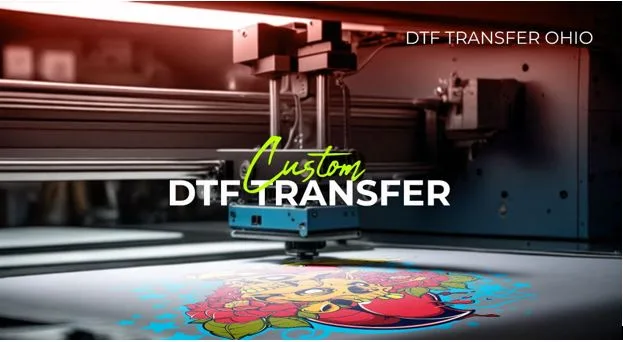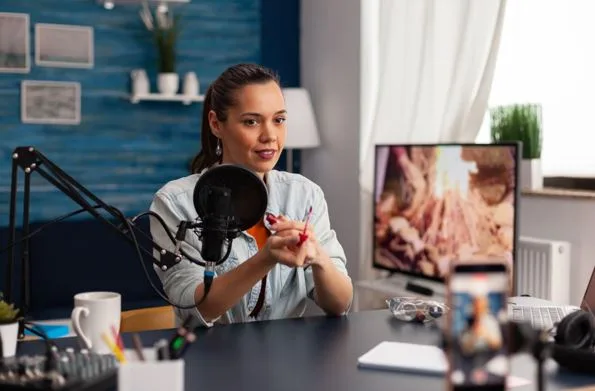Custom DTF Transfer: How Direct to Film Printing Is Transforming Apparel Production in Ohio and Beyond
A new era of custom printing is emerging, one defined by technology, flexibility, and creativity. Across Ohio and throughout the United States, small businesses, designers, and apparel brands are embracing Direct to Film or DTF printing to create high-quality, full-color designs without the complexity or limitations of traditional methods.
The growing demand for custom dtf transfer services is evidence of how this innovative process is reshaping modern printing, combining professional results with efficiency and accessibility for creators of all sizes.
What Is DTF Printing
DTF stands for Direct to Film, a process that prints digital artwork onto a transparent film using high-resolution inks. The printed film is then covered with a special adhesive powder, cured with heat, and pressed onto fabric with precision and pressure.
The outcome is a soft, flexible, and vibrant print that feels like part of the fabric and remains bright even after repeated washing. Unlike screen printing, DTF does not require separate screens or color setups. It is fully digital, allowing for photo-quality designs and fast turnaround.
DTF printing works on virtually any material, including cotton, polyester, canvas, fleece, and blended fabrics. It delivers consistent, professional results for everything from corporate uniforms to fashion apparel and custom merchandise.
Why DTF Technology Is on the Rise
Businesses and consumers are increasingly seeking personalized, sustainable, and affordable printing options. DTF printing answers all three needs.
For small business owners, it eliminates the need for large production runs or expensive setup fees. For customers, it means faster service, vivid colors, and products that last.
The process also fits the growing on demand economy. Companies can order prints as needed, press them on site, or store pre printed transfers for future use. This flexibility is driving demand for custom dtf transfer services among apparel shops, online sellers, and creative entrepreneurs nationwide.
Industry-Standard Heat Press Guidelines for Reliable DTF Application
Before pressing any DTF transfer, make sure your garment and heat press are properly prepared. A quick pre-press of 3 to 5 seconds removes moisture and flattens the fabric. Once the transfer film is positioned and the heat press is closed, the adhesive activates and bonds to the garment. When the press finishes its cycle, peel the film while warm to reveal a smooth, vibrant print.
Use this checklist as a step-by-step guide:
- Pre-press for 3 to 5 seconds
- Press between 300 and 315°F for 12 to 15 seconds
- Apply medium to firm pressure at 40 to 60 PSI
- Peel warm for the best results
- Re-press with parchment or Teflon for 3 to 5 seconds
- Increase time or heat for thin or detailed artwork
- Add extra pressure for thick garments
- Adjust temperature depending on the fabric
- Test one transfer before a full run
Adjustments are sometimes needed based on the material or design. Detailed prints may benefit from pressing 15 to 18 seconds or raising the heat slightly up to around 320°F. Cotton performs well with standard settings, polyester should be pressed at 285 to 300°F to prevent heat marks, and blends require mid-range temperatures. A short second press gives the design a cleaner finish and added durability.
Important Notes:
Your final results depend on the accuracy of your heat press, consistent pressure, and environmental factors like humidity. Since these affect adhesion and peel quality, always press a test sample first. Follow your equipment manufacturer’s guidelines and the material supplier’s recommendations for the most dependable results.
DTF vs. Traditional Printing Methods
Traditional printing methods like screen printing, vinyl transfer, and sublimation each have their uses, but they come with limitations.
Screen printing is ideal for bulk production but costly for small orders. Vinyl can peel and lacks color depth. Sublimation produces bright results but only works on light polyester fabrics.
DTF printing bridges these gaps by offering the durability of screen printing, the color flexibility of sublimation, and the simplicity of vinyl transfer without the drawbacks. It produces detailed images, gradients, and photographic designs on any fabric type, all with a smooth, breathable finish.
The Benefits of Custom DTF Transfers
The appeal of DTF printing lies in its balance of quality, speed, and accessibility.
- No minimum order requirements make it perfect for startups and small businesses.
- Fast turnaround allows printers to deliver within 24 hours.
- Strong durability ensures colors remain vibrant through washing and wear.
- Eco friendly inks reduce waste and chemical use.
- Wide versatility supports both apparel and accessory printing.
For Ohio based creators, DTF printing has become a key advantage, helping small businesses compete with larger national brands through quality and innovation.
Ohio at the Center of a Printing Revolution
Ohio has long been a hub of American manufacturing and innovation. Today, it is at the forefront of digital printing’s next evolution.
Local providers such as DTF Transfer Ohio have helped make advanced printing technology accessible to families, schools, and businesses across the region. They offer same day turnaround, professional color matching, and affordable pricing with no minimums.
This combination of local service and global level quality is helping Ohio become a center for custom apparel production, attracting clients from both within the state and beyond.
Sustainability and Efficiency
As industries shift toward more sustainable practices, DTF printing offers a cleaner, more efficient approach. The process uses water based inks and produces less waste than traditional screen printing. Because transfers can be printed on demand, overproduction and leftover stock are minimized.
For environmentally conscious consumers, custom dtf transfer products provide an eco friendly way to enjoy personalized fashion and branding without compromise.
Applications Across Industries
The flexibility of DTF printing means it can serve a wide range of sectors:
- E-commerce sellers producing print on demand apparel.
- Corporate brands ordering uniforms and promotional merchandise.
- Nonprofits and schools creating event and team apparel.
- Local designers testing new fashion lines or seasonal collections.
- Sports teams printing durable, colorful uniforms.
From small online stores to large distributors, DTF printing is transforming how custom products are designed, produced, and delivered.
DTF and the Creator Economy
The growth of DTF printing aligns with the rise of the creator economy. Entrepreneurs, influencers, and independent artists can now launch their own apparel brands with minimal investment.
Using custom dtf transfer technology, creators can design and sell unique merchandise without owning expensive equipment. This has democratized the apparel industry, opening doors for innovation and self expression at every level.
The Future of Apparel Customization
Industry analysts predict double digit growth in digital textile printing over the next decade, driven by consumer demand for personalization. DTF printing’s ability to deliver vibrant, sustainable, and durable designs positions it at the heart of that expansion.
As more local providers invest in advanced printers and sustainable materials, the accessibility of DTF printing will continue to grow. What began as a niche method is now setting new standards for speed, quality, and creative freedom.
Conclusion
The rise of custom dtf transfer printing marks a turning point in the apparel industry. By merging cutting edge technology with creative possibility, DTF printing empowers businesses and individuals alike to design, produce, and sell with unprecedented flexibility.
In Ohio and beyond, the technology is helping small creators compete globally while encouraging more sustainable and personalized production.
DTF printing is more than a trend. It is the foundation of a new creative economy built on innovation, efficiency, and expression.





